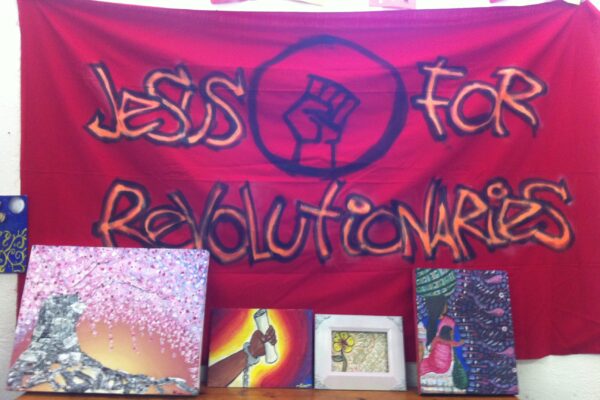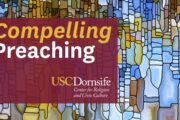Snapchat’s recent deal to lease more than 40,000 square feet in Venice caused some neighbors to throw up their hands in a “there goes the neighborhood” gesture. “Run for your lives! The start-ups are coming! The start-ups are coming!” they scream as they run through the streets.
Over the last five years, hundreds of tech start-ups companies have moved into Los Angeles’ Silicon Beach (think West L.A. from LAX to Santa Monica). Real estate prices in places like Venice have skyrocketed, and locals are complaining that the influx of techies has changed the composition and character of their neighborhood. In less than five years, Snapchat’s estimated value went from zero to $19 billion (yes, billion), so despite residents’ complaints, the innovative ideas and investment dollars will likely keep rolling in to the shores of west L.A.
Over the last few decades, some evangelical churches have looked towards corporate America for innovative management models and growth strategies. The success of the megachurch model has served as the clearest example of this trend, as churches were built with a corporate headquarters aesthetic and megachurch pastors took on the responsibilities and budgets that resembled those of a CEO.
But just like in Venice Beach, there has been pushback from the locals. Over the last few months, I have interviewed dozens of pastors and members of small- and medium- sized evangelical churches in Los Angeles. When I ask them to tell me what their church will look like in ten years, the most common response is something like, “we hope to grow, but we do not want to become a megachurch.”
Snapchat grew by following “silicon” model of innovation. The company started as an innovative idea in a Stanford undergraduate course, and the idea was developed into a marketable product inside of a Venice Beach bungalow. Users now send 700 million self-destructing photos and videos each day.
Robert Chao Romero, pastor of Jesus 4 Revolutionaries, implements a radically different paradigm of innovation than used by the silicon start-ups. He describes his church as Rasquache, a Spanish word originally used a pejorative term in Mexico implying poverty—something like how the word ghetto is sometimes used. In the last decade, Chicano artists and scholars have reinterpreted the word by emphasizing the resourcefulness of Rasquache projects. To Romero it simply means “doing a lot with a little.”
Jesus 4 Revolutionaries (J4R as members call it) was planted with the intention of serving Christian progressive activists. J4R member Vanessa Carter describes the church as a place where “we are definitely talking about politics and we are definitely talking about Jesus.”
She was drawn to the church because it offered a safe and supportive space to ask questions. “How do we be faithful to who we know Jesus to be, what we know church to be, and give fair attention to all the issues we’re seeing in the world,” she says. “For example, what does it mean to be an undocumented immigrant? Well, scripture doesn’t call that out in those exact words, but it addresses it.”
J4R holds services once a month, not every Sunday, so Vanessa calls another church home. To her, J4R is an innovative way to think about church. “I love the people there. I feel like they’re kindred spirits,” she says. “It will probably never be a primary church. It’s not intended to be. It’s meant to support people who can’t find that space to talk about grassroots justice, theology and its practical application in their home church.”
Snapchat’s funding came from venture capitalists, so while parents of high school students may not be thrilled at the firm’s success, investors have been delighted. At J4R, there are no outside investors to delight. Romero says with the Rasquache model, “you’re not beholden to anybody. In a megachurch, the pastor has to be careful, because a rich donor might not like it. … We can say whatever we want, hopefully guided by God and the Bible and the Holy Spirit.”
J4R doesn’t take offerings at the monthly worship services. With no budget, the Romero family opens their home for the service and relies on a shared leadership model to implement church activities. Though not always the most efficient, Romero thinks it fosters a sense of belonging. “The focus is on relationships,” he says. “We might be 20 or 30 people, but the people are there because they really want to be, and everyone’s using their gifts, as opposed to showing up and being passive.”
Though the term has Aztec origins, Romero sees Rasquachismo as a concept pulled straight from the pages of the New Testament. “It’s like the idea of the loaves and the fishes. I think it’s utterly Biblical: offer the few fishes you have to God, and then God does so much… It takes a lot of time though.”
J4R is an example of how evangelicals are rethinking church by looking towards seemingly disparate sources like Chicano Studies and the slow church movement for inspiration as opposed to models and ideas that have proven successful in a capitalist economy.
Jesus 4 Revolutionaries may never “go viral” and become the next Saddleback or Hillsong, but the church is building a strong foundation by investing in strong interpersonal relationships. Another reason the church has potential to grow because it directly addresses a growing niche of Christians who may be evangelical in their theology, but progressive in their politics. And their grassroots strategy could help them avoid angering the neighbors.
Photo courtesy of Jesus 4 Revolutionaries
Andrew Johnson is a contributing fellow with the USC Center for Religion and Civic Culture.





